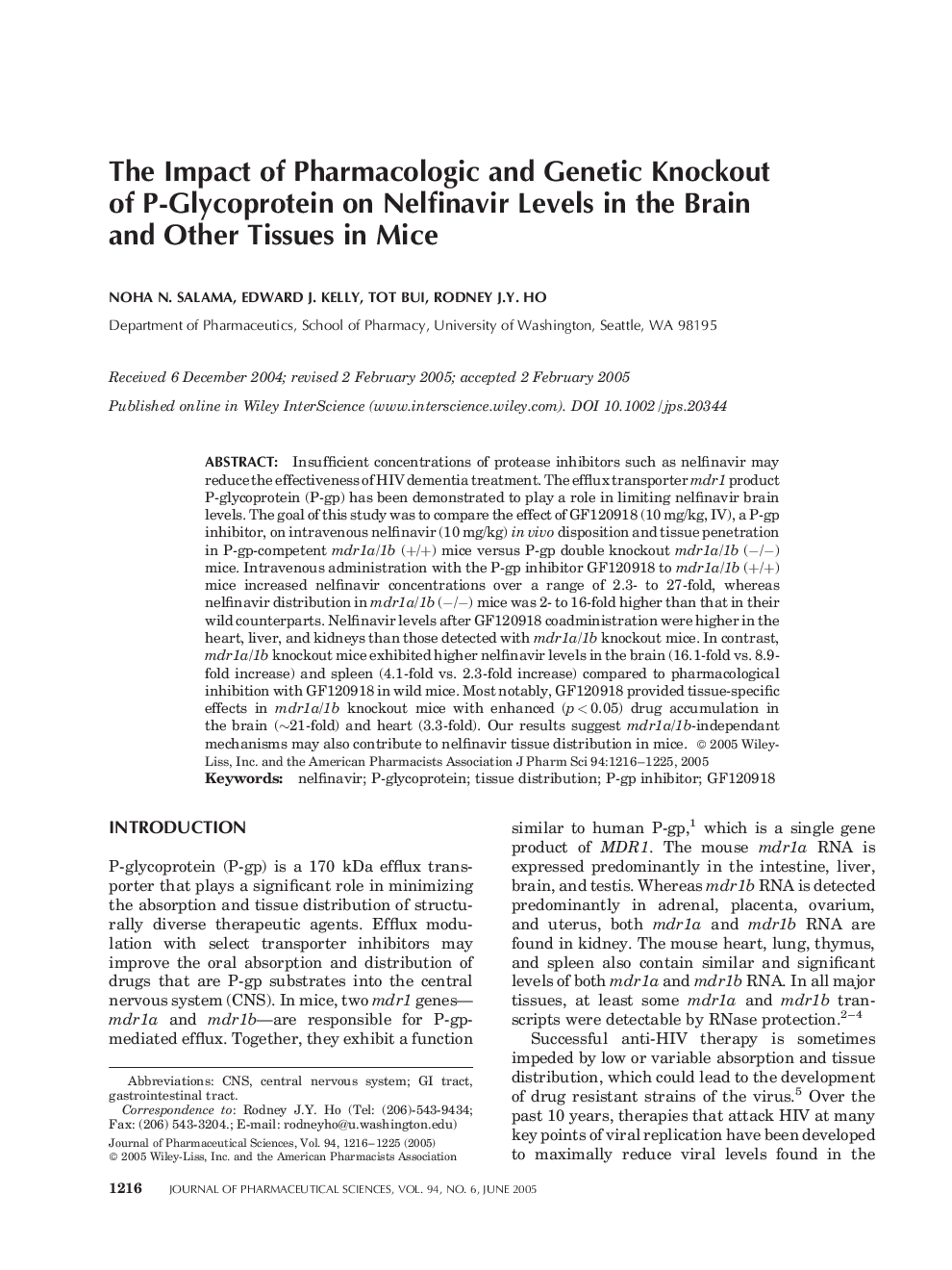| Article ID | Journal | Published Year | Pages | File Type |
|---|---|---|---|---|
| 8994654 | Journal of Pharmaceutical Sciences | 2005 | 10 Pages |
Abstract
Insufficient concentrations of protease inhibitors such as nelfinavir may reduce the effectiveness of HIV dementia treatment. The efflux transporter mdr1 product P-glycoprotein (P-gp) has been demonstrated to play a role in limiting nelfinavir brain levels. The goal of this study was to compare the effect of GF120918 (10 mg/kg, IV), a P-gp inhibitor, on intravenous nelfinavir (10 mg/kg) in vivo disposition and tissue penetration in P-gp-competent mdr1a/1b (+/+) mice versus P-gp double knockout mdr1a/1b (â/â) mice. Intravenous administration with the P-gp inhibitor GF120918 to mdr1a/1b (+/+) mice increased nelfinavir concentrations over a range of 2.3- to 27-fold, whereas nelfinavir distribution in mdr1a/1b (â/â) mice was 2- to 16-fold higher than that in their wild counterparts. Nelfinavir levels after GF120918 coadministration were higher in the heart, liver, and kidneys than those detected with mdr1a/1b knockout mice. In contrast, mdr1a/1b knockout mice exhibited higher nelfinavir levels in the brain (16.1-fold vs. 8.9-fold increase) and spleen (4.1-fold vs. 2.3-fold increase) compared to pharmacological inhibition with GF120918 in wild mice. Most notably, GF120918 provided tissue-specific effects in mdr1a/1b knockout mice with enhanced (p < 0.05) drug accumulation in the brain (â¼21-fold) and heart (3.3-fold). Our results suggest mdr1a/1b-independant mechanisms may also contribute to nelfinavir tissue distribution in mice. © 2005 Wiley-Liss, Inc. and the American Pharmacists Association
Related Topics
Health Sciences
Pharmacology, Toxicology and Pharmaceutical Science
Drug Discovery
Authors
Noha N. Salama, Edward J. Kelly, Tot Bui, Rodney J.Y. Ho,
